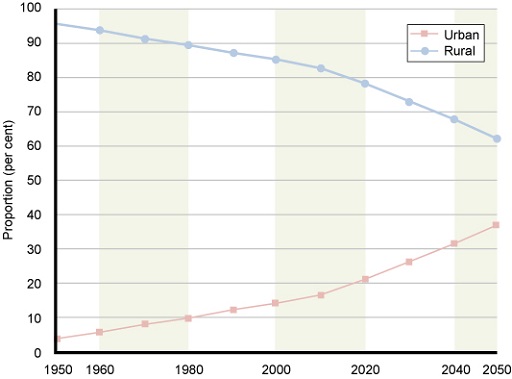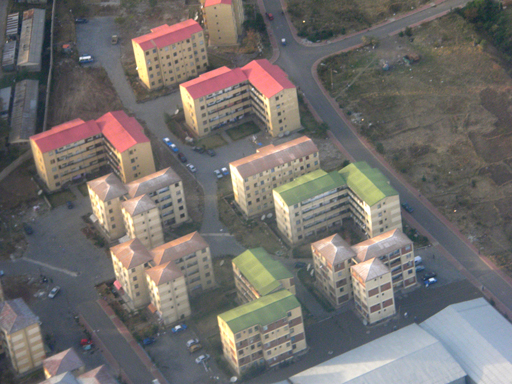15.4 Urbanisation
In Ethiopia, not only is the total population growing fast, but it is also on the move. Many people are moving away from rural areas and into the towns and cities, resulting in an increase in the urban population. The urban population is the percentage of the total population resident in urban areas. In Ethiopia in 2015 this is about 18%. Urbanisation is the increase in the number of people living in towns and cities, relative to rural areas. Figure 15.2, which you first saw in Study Session 6, shows the trend in urbanisation from 1950 onwards. Note that this includes predicted figures to the year 2050. The gradient (steepness) of the red line is slightly greater beyond 2015, indicating that urbanisation is predicted to increase at a faster rate.

The movement of people from rural to urban settings is becoming a major issue. These people arrive in need of somewhere to live, and although there are many signs of economic growth and development in urban areas, it is a challenge for towns in Ethiopia to absorb migrants from rural parts of the country and provide them with adequate housing. The current stock of urban housing is both insufficient and of poor quality. Only 27% of the urban population has access to improved sanitation, with another 42% using shared facilities, leaving 31% with unimproved or no latrine access (data for 2012, JMP, 2014a). The serious deficiencies in sanitation services and random defecation in urban areas have created dangerous health and environmental problems.
New construction to meet the demands of urbanisation may not solve these problems. In Addis Ababa and other cities in Ethiopia many condominiums and other housing are being built to provide accommodation for the growing urban population (Figure 15.3). Rapid construction without adequate planning procedures can mean that buildings are erected without having the necessary infrastructure in place, i.e. water supply and sanitation may not be part of the construction or may be inadequate or delayed. Poorly designed buildings can be short-term solutions to meet the pressing need for more housing but they will not be sustainable. These are the growing challenges that the OWNP in its future implementation will need to take into account.

15.3 Increasing population
